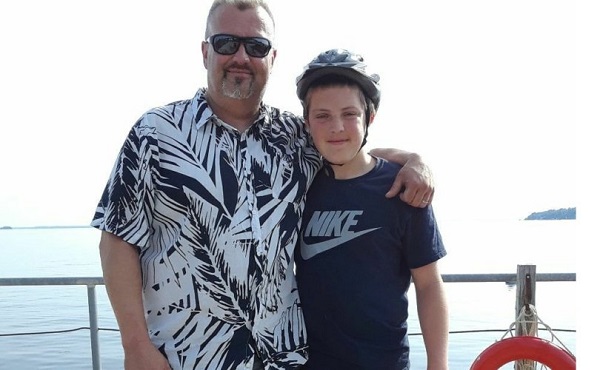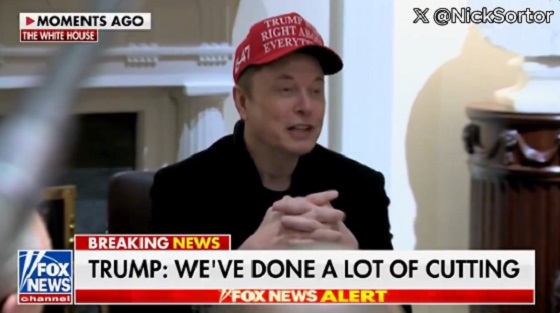armed forces
You wouldn’t believe how complicated distributing public money can get
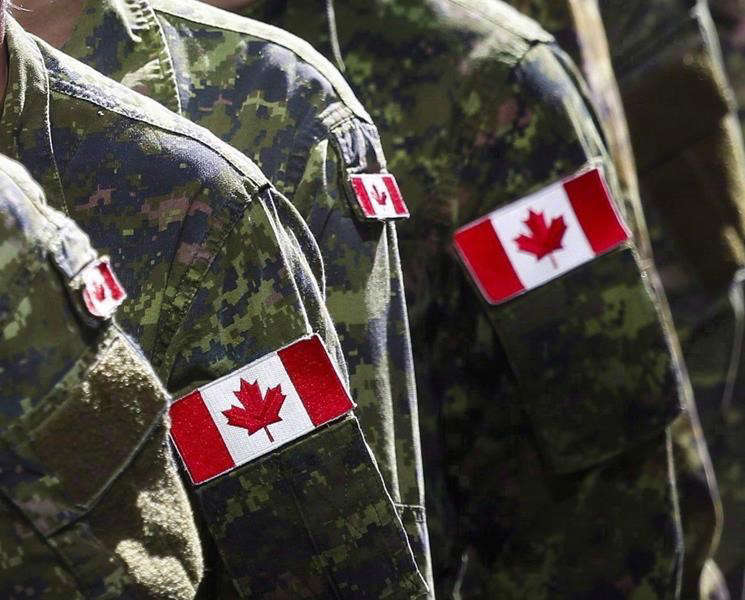
Veteran Affairs: the Big Picture
While researching posts for The Audit, I’ll often confront massive datasets representing the operations of agencies with which I’m not in the least familiar. Getting to the point where all the raw numbers turn into a useful picture can take considerable effort, but it’s a satisfying process.
But my first attempts to understand Veteran Affairs Canada (VAC) felt a bit different. I wasn’t just looking at funding and costs, but at the frustrations and suffering of people who, to a greater or lesser degree, were harmed through their service to the country. Here, I hope, is part of their story.
The Audit is a reader-supported publication. To receive new posts and support my work, consider becoming a free or paid subscriber.
Veterans Affairs Funding
There are currently more than 460,000 living veterans of the Canadian military. The estimated 2024-25 spending allocation for Veteran Affairs Canada – whose mandate is to serve that population – is around $4.8 billion. The department employs less than four thousand people, which is actually around eight percent fewer than in 2010. Having said that, employment at the distinct Veterans Review and Appeal Board has grown from zero to 161 since 2017.
Besides VAC, the Office of Infrastructure of Canada will spend around $16.5 million on their Veteran Homelessness Program, and Department of National Defence has another $1.6 million budgeted for Community Support for Sexual Misconduct Survivors Program – something for which veterans will also be eligible.
In addition, nearly $2.5 million in grants from various government agencies (including Canada Mortgage and Housing Corporation) was given in 2023 to the Homes for Heroes Foundation, which provides housing and support for at-risk veterans.
Non-government agencies also work to support veterans. In 2023, for instance, the War Amps reported spending $2.7 million on “Service Bureau and Advocacy” and around $700,000 on “Veterans Issues – Special”. The Royal Canadian Legion Dominion Command spent around $1.15 million on veterans services in 2022.
The True Patriot Love Foundation is also a big player in this area, channeling nearly $2.7 million in 2024 to other charities working for veterans. At the same time, more than 30 percent of their own budget came from government sources.
One example of such flow-through funding was the $360,000 given by True Patriot Love to Veterans Transition Network in 2024. In 2023, Veterans Transition Network themselves received another $2.2 million from government along with a total of $1.7 million from other charities.
These kinds of ultra-complex relationships are common in Canada’s charitable sector. The complexity may provide benefits that outsiders can’t easily see. At the same time, knowing whether moving funds through multiple organizations leads to unnecessary inefficiencies and waste is something that would probably require a serious forensic audit.
Veterans Affairs Spending
The largest line items in this year’s VAC spending include $1.6 billion for pain and suffering compensation, $1.34 billion for the Income Replacement Benefit, and $990 million for pensions for disability and death.
In 2023, VAC awarded $41.6 million in external contracts. The largest of those was worth $13.8 million and went to 674725 ONTARIO LTD for “Other Business services not Elsewhere Specified”. 674725 Ontario Ltd. appears to be closely associated with a company called Agilec which, in turn, is a part of Excellence Canada. Here’s how Excellence Canada describes itself:
“Founded in 1992 by Industry Canada as the National Quality Institute (NQI), then rebranded as Excellence Canada in 2011, we are an independent, not-for-profit corporation that is dedicated to advancing organizational performance across Canada.”
In that context, it’s interesting that in 2022, VAC awarded a $159 million contract to a joint venture between WCG International Consultants Ltd. and March of Dimes Canada for “Other Health Services not Specified Elsewhere”.
What makes that interesting? Well, WCG also shows up on an Innovation, Science and Economic Development Canada (ISED) page related to compliance with the Investment Canada Act (ICA). The ICA exists to provide transparency relating to foreign investments in the interest of maintaining a fair and competitive marketplace
This particular page identifies a “U.S.” company called Ancora BidCo Pty Ltd as the new owners of a number of businesses under contract with the federal government. Those businesses include 674725 Ontario Ltd. and WCG International Consultants Ltd.
In fact, Ancora isn’t really a U.S. company at all. They’re actually Australian (as the Pty designation suggests). But their parent company – the private equity firm Madison Dearborn Partners, LLC – indeed operates in Chicago.
There’s no direct evidence to suggest there’s anything dark and nefarious happening here. But it is strange that so many discrete contracts turn out to be awarded to what now amounts to a single foreign for-profit company.
External Contracting Patterns
Has VAC been increasing their reliance on external contracts in recent years? Well, as you can see from this graphic, it’s complicated:
I don’t know what policy changes drove those two huge spikes in 2014 ($933 million) and 2021 ($2.25 billion). But I can tell you which specific vendors are responsible for most of the increase.
In 2014, three contracts worth a total of $803 million went to Medavie Inc for “Other Business services not Elsewhere Specified”. That was 86 percent of the sum of all VAC contracts from that year.
An eye-popping 98 percent of 2021’s external spending went to just six contracts worth $2.2 billion. Medavie Inc received one of those contracts – worth $228 million. But the other five (worth a total of $1.99 billion) were all joint ventures involving WCG International Consultants Ltd.
Lifemark Health Corp. (currently owned by Loblaw) partnered with WCG for three of those contracts, and March of Dimes Canada had the other two dance slots.
What Is Medavie?
Medavie Inc. is the owner of:
- Medavie Blue Cross
- Medavie EMS Inc.
- Medavie health Services New Brunswick Inc.
- Emergency Medical Care Inc.
Between them, those companies provide health insurance, healthcare training, and emergency management services. They also provide public health program administration – which would probably account for the majority of those contract amounts.
What’s not clear to me is why there’s no record of Medavie receiving any federal contracts of any sort since 2021 – despite the fact that the VAC website tells us that they’re still actively engaged in service provision through Partners in Canadian Veterans Rehabilitation Services (PCVRS).
What Is WCG International Consultants Ltd?
As we’ve seen, WCG is now owned by an American private equity firm and is most certainly no longer not-for-profit. Their website tells us that they’re part of the APM Group, which is an Australian company providing “services in early childhood, youth, employment, insurance, justice, veterans, health, disability, and aged care”.
You’re correct to assume the APM Group is more or less synonymous with Ancora BidCo Pty Ltd. More specifically: all of APM’s publicly-traded shares were bought out in the past couple of months on behalf of Madison Dearborn Partners.
Just one more detail: according to WCG’s website, they’re:
“Partners in Canadian Veterans Rehabilitation Services (PCVRS) coordinates and administers the Rehabilitation Services and Vocational Assistance Program on behalf of Veterans Affairs Canada (VAC).”
Curious about PCVRS? Since late 2022, they’ve been tasked with administering all medical, psycho-social and vocational assistance services on behalf of VAC. However, reports suggest that not everyone has been happy with either accessibility or responsiveness under the new system.
None of this is necessarily inappropriate. And if you’re willing to work at it, you’ll be able to use public information sources to uncover a wealth of related relationships and details. But the vast amounts of money involved, along with the operational complexity make abuse possible. Which means external oversight is a good thing.
Besides all that logistical stuff, what really matters is whether veterans themselves are receiving the support and services they deserve. And that’s a question only they can answer.
The Audit is a reader-supported publication. To receive new posts and support my work, consider becoming a free or paid subscriber.
armed forces
Canada’s Military is Collapsing. Without Urgent Action, We Won’t Be Able To Defend Ourselves

From the Frontier Centre for Public Policy
By David Leis
Decades of underfunding and political neglect have left our military weak and unprepared
What Lt.-Gen (retired) Michel Maisonneuve (ret.) told me about Canada’s military was nothing short of alarming. He didn’t mince words—our armed forces are in dire straits. If we don’t act now, Canada will not only be unable to defend itself, but it will cease to be taken seriously by our allies, many of whom are already losing patience with our military decline.
Maisonneuve has seen firsthand what a functioning military looks like. He has served at the highest levels, working alongside our allies in NATO, and he knows exactly what Canada is failing to do. “We are no longer at the table when major defence decisions are made,” he told me. “The Americans don’t ask us what we think anymore because they know we can’t contribute.” That is a stunning indictment of where we now stand—a country that was once respected for its ability to punch above its weight militarily has been reduced to an afterthought.
The problem, as Maisonneuve laid out, is both simple and staggering: Canada doesn’t take its defence seriously anymore. The government has allowed our forces to wither. The Air Force is still buying CF-18s from the 1980s because the long-delayed F-35 procurement is years behind schedule. The Navy, once a competent maritime force, is barely functional, with no operational submarines and a fleet that is nowhere near what is needed to patrol our vast coastlines.
Meanwhile, the Army is struggling to recruit and retain soldiers, leaving its numbers dangerously low. “We have an Army in name only,” Maisonneuve said. “If we were called upon tomorrow to deploy a fully operational combat force, we couldn’t do it.”
Even more shocking is the state of readiness of our troops. A recent report found that 75 per cent of Canadian military personnel are overweight. Maisonneuve didn’t sugarcoat it:
“It’s unacceptable. We are supposed to be training warriors, not watching fitness standards collapse.” When the people entrusted with defending our country are struggling with basic physical fitness, it speaks to something much deeper—an institutional rot that has infected the entire system. Our allies have noticed. Canada was locked out of AUKUS, the military alliance between the U.S., the U.K. and Australia. “It wasn’t an oversight,” Maisonneuve explained. “It was a deliberate snub. The Americans don’t see us as a serious defence partner anymore.” That snub should have been a wake-up call. Instead, our government shrugged it off.
Meanwhile, Washington is openly questioning Canada’s value in NATO. The Americans see the numbers—Canada refuses to meet even the minimum defence spending requirement of two per cent of GDP. Instead of fulfilling our obligations, we offer up empty promises and expect others to pick up the slack.
Maisonneuve is blunt about what needs to be done. “First, we need to fully fund the military—and that means not just hitting the NATO target but exceeding it. Our allies spend real money on their defence because they understand that security is not optional.” He suggests Canada should aim for at least 2.5 per cent of GDP, not just as a show of commitment but as a necessity to rebuild our capabilities. Beyond money, Maisonneuve argues that military culture must be restored.
“We’ve allowed ideology to creep into the ranks. The military’s primary function is to defend the nation, not to serve as a social experiment,” he said. “We need to get back to training warriors, not worrying about whether we’re ticking the right diversity boxes.” He believes a return to a warrior ethos is essential— without it, the military will remain directionless.
Procurement is another disaster that Maisonneuve insists must be fixed immediately. “We’ve spent years dithering on replacing equipment, and every delay puts us further behind,” he said. The F-35 deal should have been signed years ago, but political hesitation means we won’t see a full fleet for years. The Navy urgently needs new submarines and icebreakers, especially to secure the Arctic, where other global powers, particularly Russia, are ramping up their presence.
The biggest issue, though, is manpower. “We need to rebuild the forces, period,” Maisonneuve told me. “That means recruiting, training, and retaining soldiers, and we are failing at all three.” He even suggested that Canada should consider implementing a national service requirement, a move that would not only increase troop numbers but also instill a sense of duty and responsibility in younger generations. “We used to be a country that took security seriously,” he said. “What happened?”
That’s the question, isn’t it? What happened to Canada? How did we go from being a country that contributed meaningfully to global security to one that can’t even defend itself? The reality is that successive governments have let this happen—first by neglecting funding, then by letting bureaucracy suffocate procurement, and finally by allowing the core purpose of the military to be diluted.
Maisonneuve is clear: Canada must act now, or it will cease to be taken seriously.
David Leis is President and CEO of the Frontier Centre for Public Policy and host of the Leaders on the Frontier podcast
armed forces
Trump fires chairman of Joint Chiefs of Staff, appoints new military leader
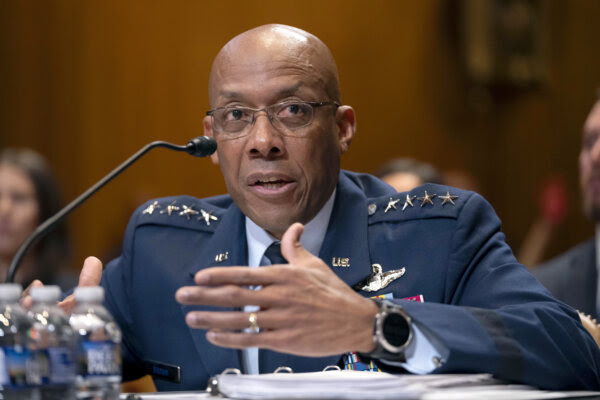

From the Daily Caller News Foundation
By Mariane Angela
President Donald Trump announced Friday the dismissal of General Charles Brown, the current Chairman of the Joint Chiefs of Staff.
In a post on Truth Social, Trump expressed his gratitude toward Brown for his extensive contributions and leadership, wishing him and his family a prosperous future. Brown’s departure marks a pivotal moment in U.S. military leadership following over 40 years of service.
“I want to thank General Charles “CQ” Brown for his over 40 years of service to our country, including as our current Chairman of the Joint Chiefs of Staff. He is a fine gentleman and an outstanding leader, and I wish a great future for him and his family,” Trump wrote.
Simultaneously, Trump introduced his nominee for Brown’s successor.
“Today, I am honored to announce that I am nominating Air Force Lieutenant General Dan “Razin” Caine to be the next Chairman of the Joint Chiefs of Staff. General Caine is an accomplished pilot, national security expert, successful entrepreneur, and a “warfighter” with significant interagency and special operations experience,” Trump said.
Trump said Caine’s appointment comes after he was overlooked for advancement during former President Joe Biden’s presidency.
“General Caine was passed over for promotion by Sleepy Joe Biden. But not anymore! Alongside Secretary Pete Hegseth, General Caine and our military will restore peace through strength, put America First, and rebuild our military,” Trump said. President Trump also announced plans to appoint five additional senior military officials, tasks he has delegated to Secretary Hegseth.
It was reported Thursday that Hegseth plans to dismiss Brown as part of President Trump’s commitment to eliminate “wokeness” from the military. Brown reportedly appears on a list of proposed removals submitted to Congress.
Brown had previously expressed his wish to retain his position even after Trump took office, and according to sources speaking to NBC News in Dec. 2024, Trump seemingly moderated his views on the general. Biden nominated Brown as chairman in 2023, and despite a heated confirmation hearing where senators scrutinized his alleged implementation of racial quotas in Air Force hiring practices, he was confirmed.
Meanwhile, Brown’s replacement, Caine, took office as the associate director for Military Affairs at the CIA on Nov. 3, 2021, after serving as the director of Special Programs at the Pentagon. Lt. Gen. Dan Caine, an F-16 pilot with extensive experience including over 150 combat hours, was commissioned in 1990 and has held numerous key roles, from the White House staff to special operations, and balances his military career with entrepreneurial ventures.
-
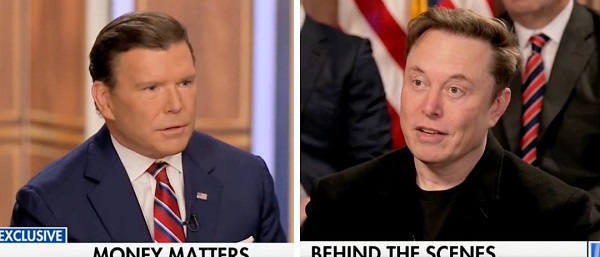
 Business2 days ago
Business2 days agoFeds Spent Roughly $1 Billion To Conduct Survey That Could’ve Been Done For $10,000, Musk Says
-
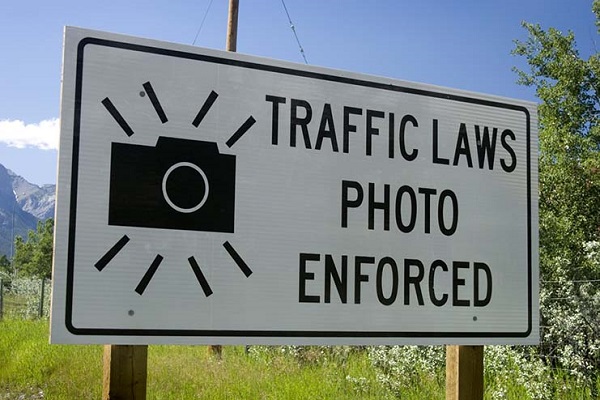
 Alberta1 day ago
Alberta1 day agoPhoto radar to be restricted to School, Playground, and Construction Zones as Alberta ends photo radar era
-
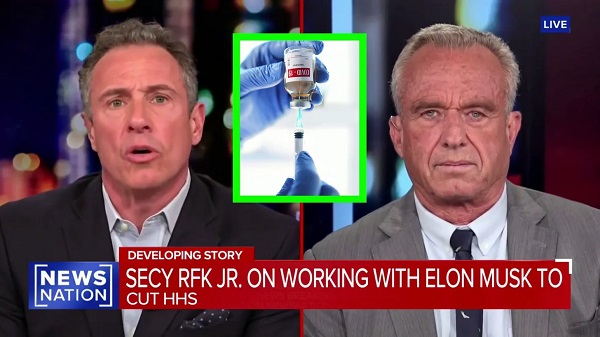
 Health1 day ago
Health1 day agoRFK Jr. Drops Stunning Vaccine Announcement
-
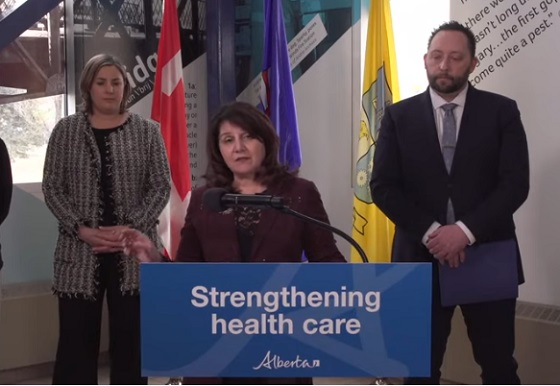
 Alberta21 hours ago
Alberta21 hours agoProvince announces plans for nine new ‘urgent care centres’ – redirecting 200,000 hospital visits
-
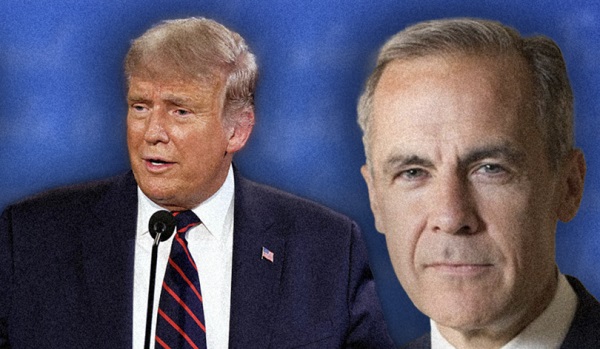
 2025 Federal Election19 hours ago
2025 Federal Election19 hours agoDonald Trump suggests Mark Carney will win Canadian election, touts ‘productive call’ with leader
-
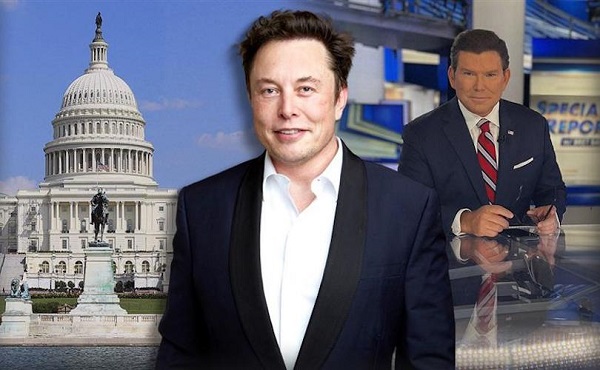
 Business19 hours ago
Business19 hours agoElon Musk, DOGE officials reveal ‘astonishing’ government waste, fraud in viral interview
-

 Energy2 days ago
Energy2 days agoEnergy, climate, and economics — A smarter path for Canada
-
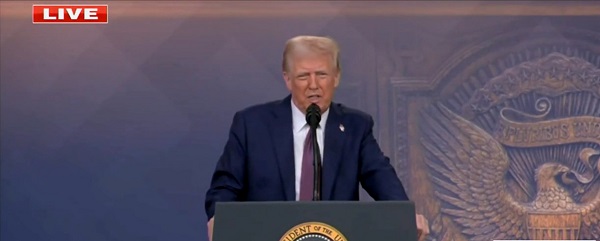
 Business2 days ago
Business2 days agoTrump Reportedly Shuts Off Flow Of Taxpayer Dollars Into World Trade Organization






